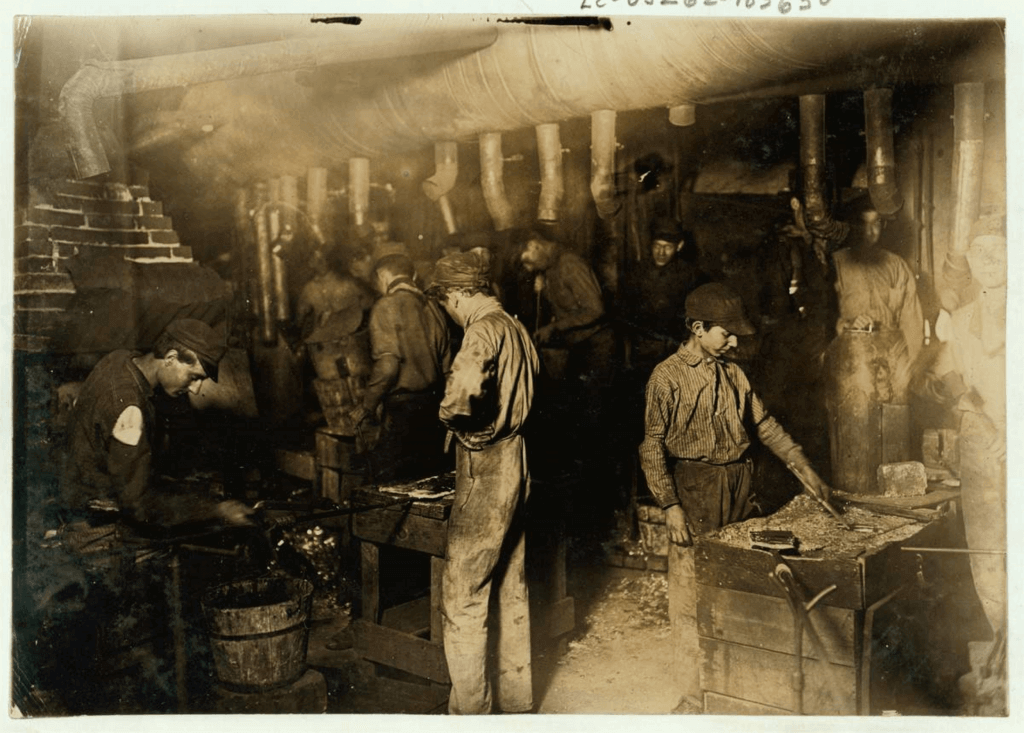World Day Against Child Labor
World Day Against Child Labor is observed next on Friday, June 12th, 2026 (260 days from today).

June 12th is set aside to focus on ending child labor. World Day against Child Labor is held annually to raise awareness and prompt action to stop child labor in all of its forms.
History of World Day against Child Labor
The International Labor Organization (ILO) launched World Day against Child Labor in 2002 to focus attention on the global scope of child labor and the action and efforts needed to combat child labor. Each year, on 12 June, World Day brings together governments, employers' and workers' organizations, civil society, as well as millions of people around the world to highlight the plight of child labor and how to help them.
The Sustainable Development Goals (SDGs), adopted by world leaders in 2015, include a new global commitment to ending child labor. Specifically, goal 8.7 of the Sustainable Development Goals calls on the global community to: "Implement immediate and effective measures to eliminate forced labor, end modern slavery and trafficking in persons, while ensuring the prohibition and elimination of the worst forms of child labor, including the recruitment and use of child soldiers, and by 2025 end child labor in all its forms.”
Child labor issues
Today, around the world, about 218 million children work full-time. They do not go to school and even have little or no time for playing anything. Many people do not receive proper nutrition or care because they had been denied the opportunity to be children. More than half of them are exposed to the worst forms of child labor such as working in hazardous environments, slavery or other forms of forced labor, illegal activities including trafficking drugs and prostitution, as well as participation in armed conflicts.
The ILO Program on Child Labor (IPEC) is guided by the principles set forth in the ILO Minimum Age Convention No. 138 as well as the Worst Forms of Child Labor Convention No. 182 to eliminate child labor effectively.
What is child labor?
Not all work performed by children should be classified as child labor that should be eliminated. The involvement of children or a young person in work that does not affect their health and personal development or interfere with their education is generally seen as something positive. This includes activities like helping their parents around the house, supporting the family business or earning pocket money outside of school hours and during school holidays. These types of activities contribute to the development of children and the well-being of their families; they provide them with skills and experience, and help prepare them to be productive members of society throughout their adult lives.
Child labor is work performed with the intent to harm and endanger children, in violation of international and national law. It deprives children of their right to go to school or forces them to shoulder the double burden of going to school and working. Child labor to be eliminated is a small group of employed children. It includes:
- All the worst forms of “unconditional” child labor, such as slavery or practices similar to slavery, the use of children for prostitution or for illegal activities;
- Work performed by a child below the minimum legal age for that type of work, as defined by national legislation in accordance with international standards.
The worst forms of child labor involve children being enslaved, separated from their families, exposed to serious dangers and diseases and/or having to earn their own living on the streets of big cities. However, they are often at a very early age. A particular "labor" is called "child labor" depends on the age of the child, the type and hours of work, the working conditions and the goals pursued by each country. The answer varies from country to country, as well as across sectors within countries.
Prevalence of child labor
Children around the world often engage in paid and unpaid forms of work that do not harm them. However, they are classified as child labor when they are too young to work or engage in hazardous activities that may affect their physical, mental, social or educational development. In the least developed countries, more than one in four children (5 to 17 years old) is engaged in work that is considered harmful to their health and development.
Africa ranks highest in the region both in terms of the percentage of children involved in child labor - one in five - and the absolute number of children in child labor - 72 million. Asia and the Pacific rank second in both measures - 7% of all children and 62 million in absolute terms are child labor in this region.
Africa and the Asia and Pacific regions together account for nearly nine out of ten child laborers worldwide. The remaining of child labor population includes the Americas (11 million), Europe and Central Asia (6 million), and the Arab countries (1 million). In terms of morbidity, 5% of child laborers are in the Americas, 4% in Europe and Central Asia, and 3% in Arab countries.
While the rate of child labor is highest in low-income countries, the figure is actually larger in middle-income countries. 9% of all children in low-middle-income countries, and 7% of all children in upper-middle-income countries, are in child labor. Statistics on the absolute number of child laborers in each national income group show that 84 million child laborers, about 56% of all child laborers live in middle-income countries, and an additional 2 million children live in high-income countries.
Labor standards
One of the main goals set for the International Labor Organization (ILO) when it was founded in 1919 was to eliminate child labor. Historically, the ILO's main instrument in the pursuit of the effective abolition of child labor has been the adoption and monitoring of labor standards that embody the concept of a minimum age for employment. or work. Furthermore, from 1919 on, the principle that the minimum age standard should be linked to school attendance has been part of the ILO tradition in setting standards in this area. Convention No. 138 stipulates that the minimum age for admission to work should not be less than the age of completion of compulsory education.
The adoption of Convention 182 by the ILO in 1999 strengthened the global consensus on the abolition of child labor. It provides much-needed focus without neglecting the overarching goal, embodied in Convention 138, of the effective abolition of child labor. Furthermore, the concept of worst-cases helps to set priorities and can be used as an input to address the widespread problem of child labor. This concept also helps direct attention to the impact work has on children, as well as the work they perform.
Child labor prohibited by international law is divided into three categories:
- The worst forms of unconditional child labor, internationally defined as slavery, human trafficking, debt and other forms of forced labor, are forced to recruit children for use in conflict, prostitution and pornography, and illegal activities.
- Labor performed by children below the minimum age specified for that type of work (as defined by national law, in accordance with accepted international standards) and which is therefore likely to interfere with education and holistic development of children.
- Work that endangers the physical, mental or moral health of children, either by its nature or by the conditions under which it is performed, is called “hazardous work”.
Observed
World Day Against Child Labor has been observed annually on June 12th.Dates
Wednesday, June 12th, 2024
Thursday, June 12th, 2025
Friday, June 12th, 2026
Saturday, June 12th, 2027
Monday, June 12th, 2028


